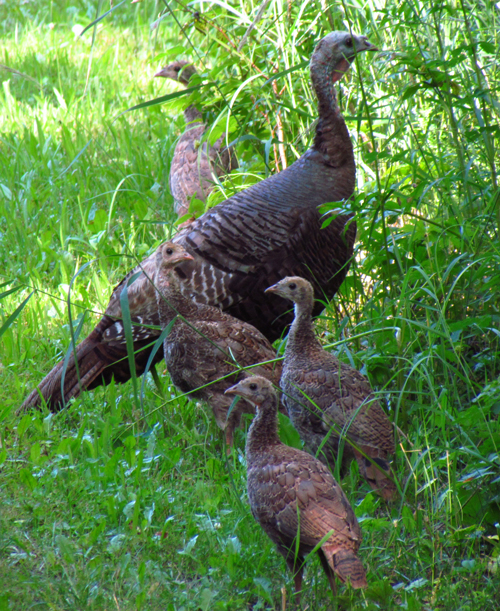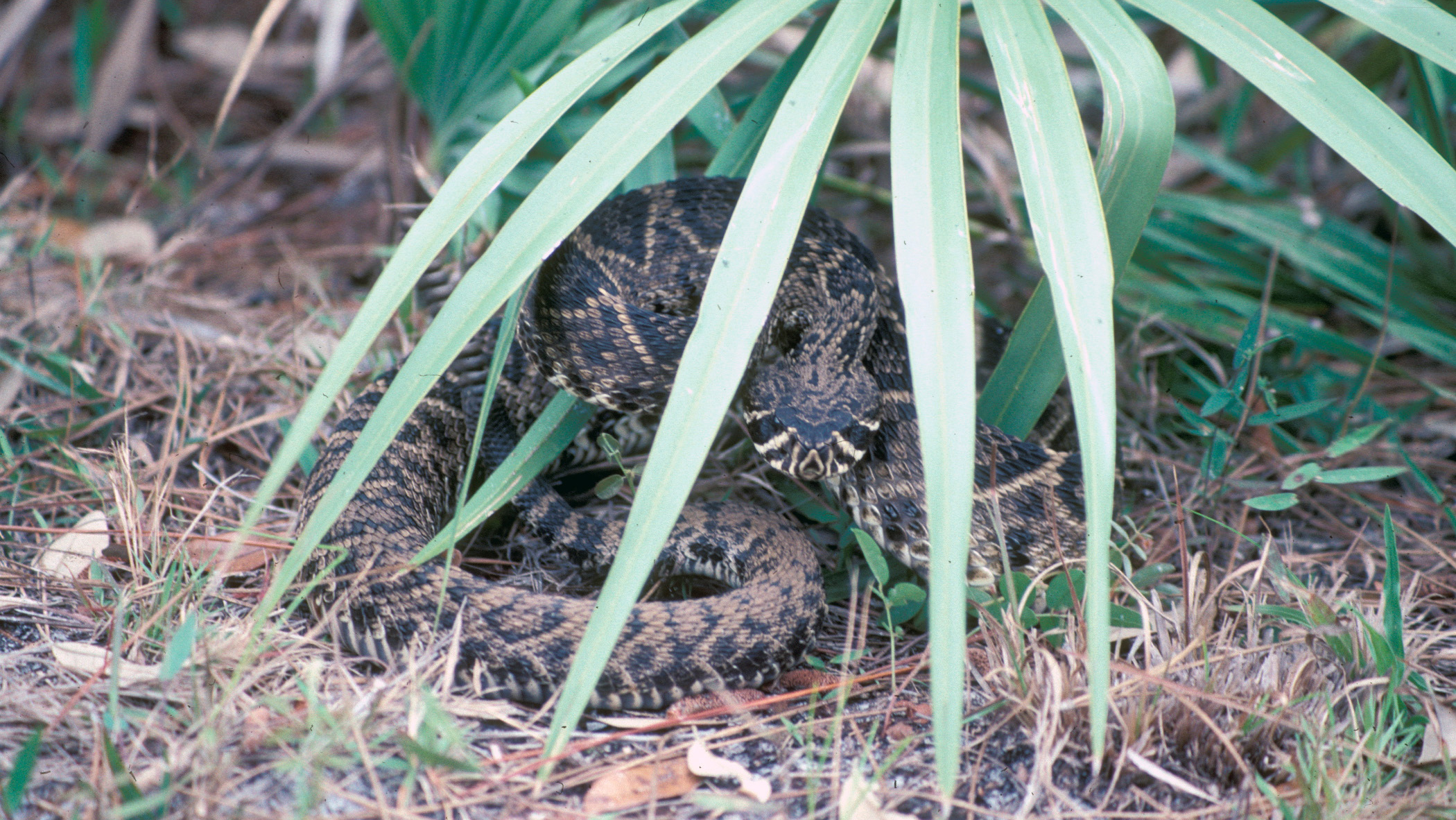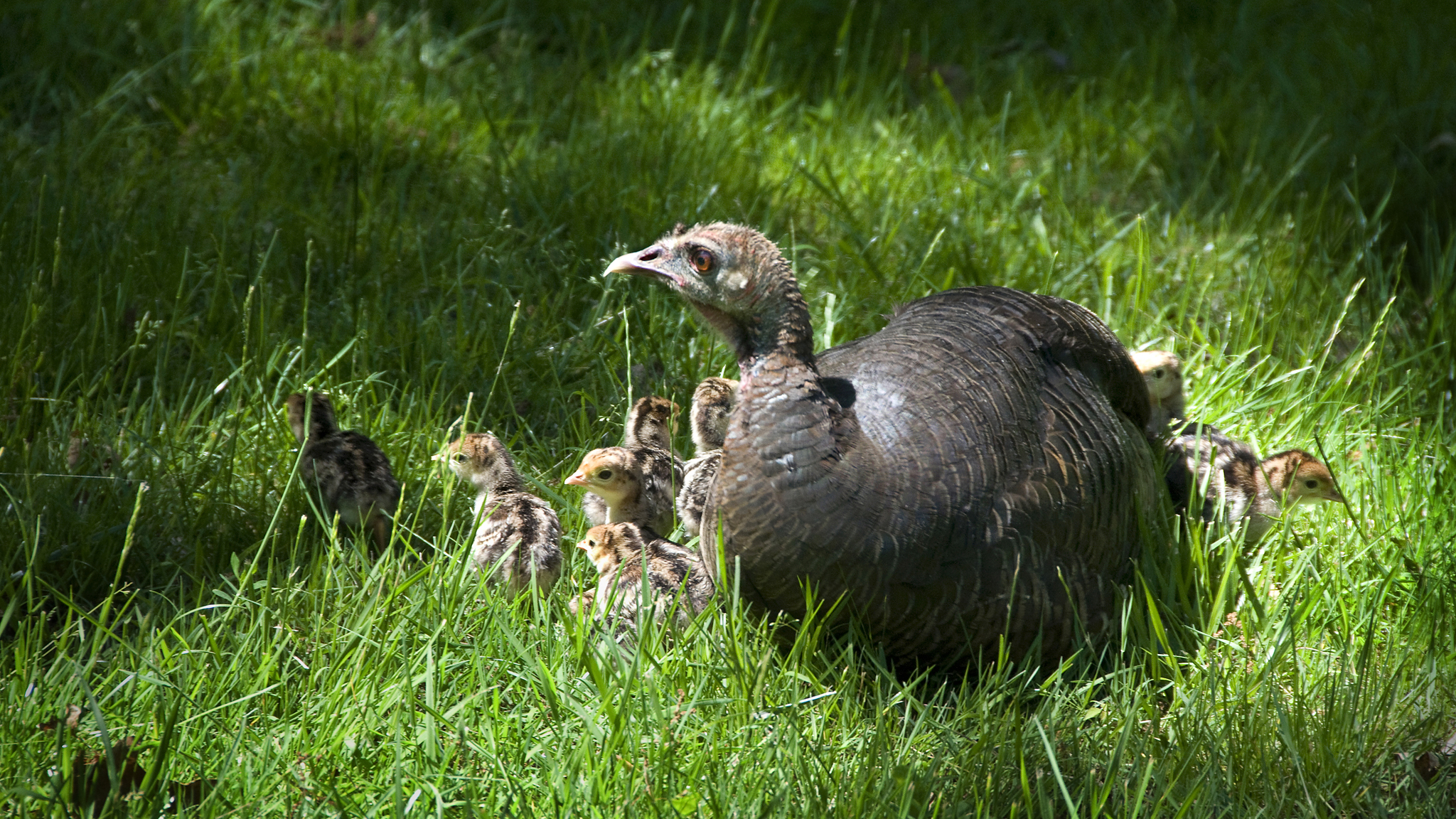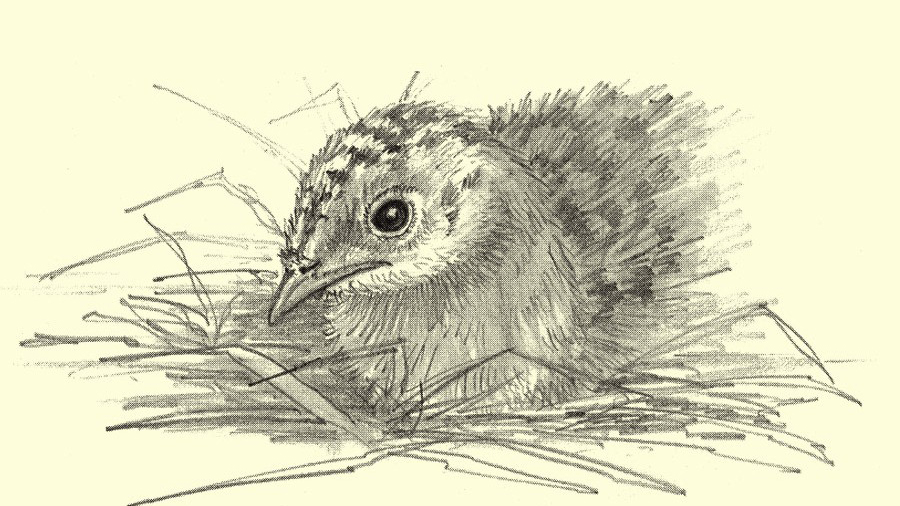Have you had your fill of parades and football games? Are you looking for another TV-watching tradition for your family this Thanksgiving weekend?
Here’s my suggestion for a new holiday tradition: watch the PBS Nature documentary My Life as a Turkey.
You will never look at turkeys the same way.
It’s the story of Joe Hutto, who spent two years as the surrogate mother of a large brood of wild turkeys in the woods of north Florida. Through incredible dedication to the tasks of raising his brood, he gained new insights into how the world appears through the eyes of a wild turkey.
Hutto raised his turkeys from eggs after their mother was killed. He worked hard to keep the turkeys alive in their first days of life, building a pen where they would spend nights safe from an endless stream of predators.
Life as a Turkey
For the next two years, Hutto shepherded the brood around the hardwood hammocks, pine flatwoods and limestone streams of his property, until the turkeys were full-grown and went their separate ways.
He spent every waking hour with them because, in fact, the turkeys couldn’t bear to be without him.
Hutto was the first living thing the turkeys saw when they hatched, so the imprinted on him as their mother hen. They would make distress calls whenever he wasn’t close by their side.
Like many devoted parents of babies and toddlers, Hutto found that his only free time was during their naps. Once they were slumbering in their pen (after falling asleep at his side), he could slip away for some non-turkey time.
Hutto’s 23 turkeys paid constant attention to his every move. As a result, Hutto took pains to do nothing that would distract them from their natural turkey occupation of exploring their world and hunting for food.
This meant that Hutto couldn’t eat regular meals while in the presence of turkeys — because it was too distracting to the birds. During waking hours, Hutto resigned himself to eating wild berries, just like his brood enjoyed.

He witnessed a hard-wired understanding of which critters are palatable (grasshoppers, spiders, spring peepers) and which aren’t (spittle bugs, millipedes, lovebugs).
The turkeys’ other element of survival was equally inborn. They instinctively identified, gauged threat level and reacted to potential predators.
For example, the turkeys knew that a rat snake was keener to eat a young turkey than a black racer would be, and behaved accordingly.
They knew as well that a red-shouldered hawk was a threat, while a vulture wasn’t. Hutto noted that any aerial raptor was watched with great caution, even if it was so high it was just a pinpoint in the sky.
Hutto did his best to train the young turkeys. He reinforced their innate understanding of threats with a set of calls he learned during his prior years as a turkey hunter. He could to tell the brood to freeze, huddle up, or flee as circumstances dictated.
Turkeys and the Limits of Traditional Research
Hutto was struck by the extraordinary awareness of turkeys to the present moment and their surroundings.
“I see in them an awareness and a presence that remind me of how relatively dull my own senses are,” he said.
Prior to meeting his turkeys, Hutto recalled that each year, he would typically find just two or three diamond-backed rattlesnakes on his Florida property. But with a turkey flock at his side and on the lookout, this number jumped to two or three a day.

Although Hutto was learning a tremendous amount about turkeys, he wasn’t pursuing this knowledge through traditional scientific means.
A traditional approach to turkey research, for example, might involve catching, tagging and radio-tracking turkeys. Through these means, noting the locations of individuals over time would provide information on habitat use, home range size and territoriality.
A wildlife biologist putting in eight, ten or even twelve hour-days, for days on end, can generate a lot of data.
But there are insights into animals’ lives that can’t always be learned through the regimented data collection dictated by the scientific method. There is room for supplementary approaches that are more intuitive, or even mystical.
Mystics go to extreme measures to transcend ordinary human experience in an effort to gain deep insights into the nature of reality.

Examples include the Buddhist monk who dedicates her life to long bouts of silence and meditation, or the shaman who ingests rainforest botanicals to break beyond the bounds of normal perception.
And yes, another example is someone who decides to spend years of his or her life living intimately with wild animals to understand an entirely different consciousness. Our most famous and beloved example of this practice is Jane Goodall, who has spent much of her life immersed in the lives of chimpanzees.
(In fairness, there are always charlatans practicing the mystical arts. Case in point: Grizzly Man, Timothy Treadwell, who lost his life as a result of being recklessly intimate with wild bears.)
Only a select few have what it takes to live such an extreme existence. The role of people like Hutto is to live side by side with animals, and then bring back insights that the rest of us can use.

Thankfully these insights are wonderfully documented in both My Life as a Turkey and Joe Hutto’s book, Illumination in the Flatwoods. The book is based on the journals he kept during his time with the turkeys.
In a Q & A on the PBS website, Hutto is asked what question he would pose to his turkeys.
Hutto responded that he’d like to ask his flock, “What’s it like to exist in a state of complete wakefulness? To be the definition of sentient? That’s got to be, at the very least, some serious fun!”
Tune in and see for yourself this holiday what that fun looks like.



Hutto also lived with mule deer for seven years and found them to be loving and terrified of human killing obsessions. They mourn their dead like we do. The lead doe accepted Hutto after much patient interaction, and SEVEN YEARS LIVING WITH MULE DEER used to be live-streamed in its entirety on Public Television but now I guess you can buy the film. Well worth watching especially if you have ever killed deer for “meat” or heads on walls.
I just lived through yet another Wisconsin “traditional” 9-day deer kill of hundreds of thousands of deer – much enjoyed by mostly men but increasingly recruited women sold pink camouflage outfits and pink guns. As a living wildlife journalist for the Capital Times, my column, Madravenspeak, takes on the violence toward wildlife and killing recreation. With two-thirds of wildlife already destroyed on earth in just 40 years, and 60% of large mammals on planet earth threatened with extinction NOW, we have to change our attitudes toward Brother Wildlife or go extinct with them. We humans cannot live alone on a dead planet.
Great article and movie. Thanks for sharing.
If anyone has doubts as to the amazing awareness of turkeys–I challenge them to try and sneak up on one!